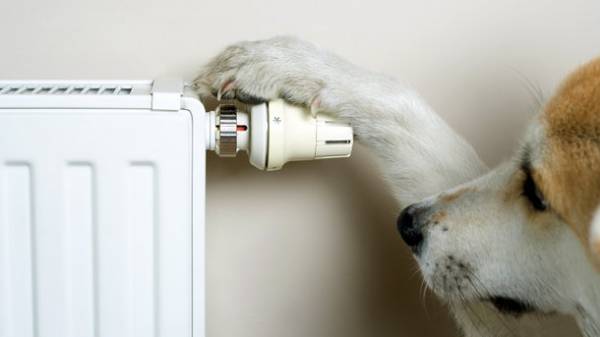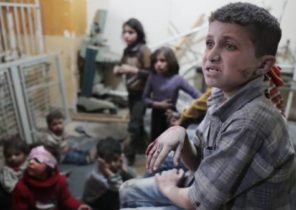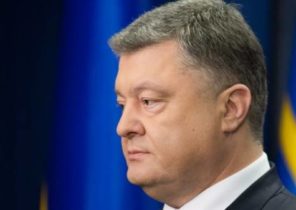
In January, the Ministry of regional development presented his Concept of realization of state policy in the sphere of heat supply, calculated up to the year 2035 It involves a deep reform of the system of heat supply of the country.
The problem that needs solving
In Ukraine, the percentage of consumers covered by the district heating system is quite high. This is because, unlike Western European countries, a significant part of Ukrainian consumers of thermal energy concentrated in compact areas in apartment buildings, a substantial amount of heat energy consumed by industry.
Combined heat and power (CHP) heat the country’s 25 cities. Most of them were introduced in 1950-1980 years Since then has changed significantly, not only production technology, but also the demand for thermal energy in the regions of their placement. With the exception of a relatively new CHP Kiev and Kharkov, most of the other main equipment is out of date.
Thermal power plant (TPP), which, together with the production of electricity heat supply, also in need of modernization. Today, 92% of the units worked for their design life (100 thousand hours), and 64% higher than the recognized world’s energy practice, the boundary of the critical resource and physical deterioration (respectively 170 thousand and 200 thousand hours).
At the enterprises of municipal power system (CHP) 60% of the boiler has fulfilled his statutory term, and 38% of boilers are operated outdated boilers with low efficiency. Almost 40% of the heating points are in poor condition, resulting in frequent interruptions in the hot water supply system and waste resources.
Heat networks are mostly worn out, 16% of their total length are in poor condition.
Schemes of heat supply of cities and other settlements are developed without consideration of or in the absence of schemes of territorial development and General development plans. It is not possible to ensure optimal development of heat supply system on the basis of a combination of centralized and Autonomous heat supply.
According to the authors of the Concept, the strategic approach to reforming the system consists of three components:
– revision of the procedure for tariff setting. Despite the increase in the price of natural gas to communal heating enterprises and, consequently, the increase in the past year tariffs for services of Central heating, remain capital and operating expenses of enterprises that are not covered by the tariff. So not included, for example costs associated with servicing the loan taken from international financial organizations for implementation of investment projects. Furthermore, there is no established mechanism of tariff adjustment in case of increase in operating costs that keeps the rate below the required level in terms of increased energy prices, rising minimum wages, etc.;
– adjustment of system of calculations between subjects of the market. The current system is unbalanced due to the inconsistency of the deadline of payment for natural gas services for Central heating, existing system of clearing and the lack of incentives for timely payment of services by consumers. Because of the existing debts for energy supplies have been cases of blocking accounts of enterprises CHP, making it impossible to timely servicing of loans;
– changing the system of subsidies. In the existing system are not clearly defined responsibility for untimely or incomplete payment for services rendered between the consumer and the state in the face of numerous bodies involved in the calculations; there is no control over charged and actually received by the amount of the grant; system supportive of the offsets affecting the calculations and liability for the correctness of the payment amount.
Deadlines
The implementation of the Concept provided in the period up to 2035 and consists of three main stages.
On the first (2017-2018) is assumed to be:
to simplify the implementation of investment projects aimed at reconstruction and modernisation of the CHP;
– to set the tariffs, which fully cover both capital and operating costs of CHP enterprises;
– to implement the incentive tariff mechanisms;
– to stimulate the reduction of losses during production and transportation of thermal energy;
– to facilitate the transition of economic entities in markets for the delivery of thermal energy on two-part tariffs (consisting of a fixed “subscription” fees and payments for consumed volume);
– to define ways of development of sphere of a heat supply of each region and locality, to create a road map of a possible transition of settlements from the district heating system for Autonomous heat supply or individual (apartment);
– go to the cash funds on current accounts with special mode of usage in terms of compensation to business entities from the state budget for the privileges and housing subsidies.
In the second phase (2019-2025.) provides:
– investment and innovative development of the enterprises CHP at thermo mass (40-50% of the buildings),
– reconstruction and modernization of heating systems, the achievement of the average in Ukraine the level of heat consumption in buildings by 60-80 kWh/sq m/year;
– the achievement of the share of alternative energy sources in the total balance of heat supply systems in 30%;
– the transition to market conditions of functioning of enterprises CTV, the development of competition in the heating sector.
In the third phase (2026-2035). expected:
– 100% completion of thermomodernization of buildings;
– achieve the national average level of consumption of heat in buildings is 20-60 kWh/sq m/year;
– achieve the share of alternative energy sources to 40%.
Ways and means of solving the problem
Improvement of legislative and normative-legal support is planned in the following areas:
– adoption of new and revision of existing normative-legal acts on issues of economic stabilization and development of enterprises CHP;
– the introduction of mechanisms of economic incentives for efficient energy consumption and promotion of energy-saving investments;
– the settlement of relations arising in connection with the production, supply, transportation and consumption of thermal energy;
– establishment of norms of energy consumption for production and transportation of thermal energy;
– limits and replacement standards of consumption of thermal energy in buildings;
– development of heat supply facilities using local and alternative energy resources;
the transition of settlements from the district heating system to the system of Autonomous heating the home or individual heating.
Means of realizing the priorities of the competition and investment policies in the heating sector can be as follows:
– creating organizational mechanisms to attract private capital under leases and concessions;
– privatization of generating capacities of thermal energy;
– regulation of ownership relations;
– introduction of energy management at all levels of management.
The introduction of certification of systems of a heat supply of the city (region) and energy certification of buildings, specification of required values of thermal loads that will be carried out in the following areas:
– development of schemes for the development of heat supply system, which provides the optimal combination within the settlement of various types of supplies;
– implementation of measures for the arrangement of nodes condominium and apartment accounting and control of use of thermal energy;
– the transition to a system of heating buildings by installing individual heating units.
The increase in services and the expansion of their range to increase total sales and reduce the cost of thermal energy. To do this, in the southern regions and the Central areas of large cities, where administrative, commercial and other buildings, it is advisable to introduce a system of combined production of electricity, heat and cold.
Tariffs in the heating sector will be implemented in the following areas:
– introduction of the concept of limit tariffs and associated with its application is simple and flexible mechanisms of conversion and change of rate with change in external factors;
– improving the approach to determining the percentage of planned profits;
– the transition to a possible selection of market participants the types of tariffs;
– the establishment of tariffs that cover both capital and operating costs of CHP enterprises;
the transition to incentive tariffs;
– harmonization of deadlines of calculations of consumers for the services and enterprises CHP for natural gas;
– encourage customers to timely pay for the consumed services of Central heating;
– carrying out gradual monetization of subsidies.







